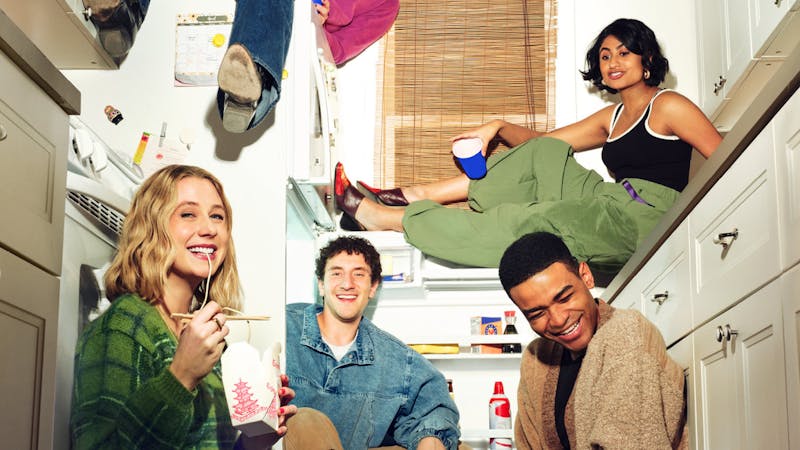Finding Dorayaki: A Film Writer’s Quest for an Elusive Pastry
Last month, the Museum of Fine Arts, Houston featured “Sweet Bean,” a film directed by Naomi Kawase about a dorayaki shopkeeper and his two unlikely friends. To those in the know, dorayaki is a treat best associated with its mascot, a blue robot cat. But if that fails to ring a bell, imagine an ice cream sandwich where you replace the wafer for a pancake-like batter and then the filling for red bean paste. The combination is a textural balance of gentle and wholesome, and incidentally the same words that describe Kawase's film.
If the promise of moviegoing is immersion, then films about food already deliver by stirring the primordial sense of appetite. Who in our childhood selves did not dream of frolicking about the chocolate river of Willy Wonka’s factory? How long before we catch ourselves drooling over Jon Favreau's Cuban sandwiches in “Chef”? It's a classic Pavlovian trick. However, the longer format of film also means that the material a food movie serves has to hit more notes than an episode of “Giada at Home.”
Like any good food movie, “Sweet Bean” indulges in the procedure of preparing the titular centerpiece. The shopkeeper, Sentarô, and a septuagenarian woman named Tokue form the partnership that runs the dorayaki hole-in-the-wall. Red beans by themselves are bitter, and the ensuing montage showcases the painstaking care required to coax the sweetness out of them. The process takes the entire day, and at any step the beans could lose their flavor or burn and turn to bitterness without experienced hands. The extent of detail in this sequence speaks to the keen eye of the director. Throughout the film, Kawase balances the blander details of dorayaki making with the fast pace elements of restaurant management. Her secret ingredient, giving and taking information, rewards her with sincere thoughtfulness. The subdued Sentaro carries the baggage of self-pity, but is so indebted to his work that it never surfaces to more than world-weariness. The grandmother-type Tokue reveals her history while always remaining one step ahead of what she lets on. Even Wakana, an estranged and precocious high school girl, adds a supporting role to the film in mediating the differences between Sentaro and Tokue, betrays a buried potential for childlike whimsy. Although self-contained, “Sweet Bean” is bigger on the inside.
My faithful yardstick for measuring the quality of a film is the length of time it sticks around in my thoughts after I leave the theater. Suffice to say that “Sweet Bean” has inspired in me a little quest. I grew up watching the dorayaki promotions featuring the aforementioned blue-robot-cat for as long as I can remember. From that I developed a distinct impression of what a dorayaki would taste like, despite only having their cartoon representations to go by. The last time I did eat one was too young to have an experienced palate, but enough to remember the first bite. And it was pure bliss. Since then, the dorayaki store has closed and here I was, on a quest to find dorayaki in Houston. A ready-made dorayaki I grabbed at H Mart, although smaller than I remembered, tasted fine. But why then was I still searching? “Dorayaki in Houston” yielded no results, so I went through all the menus of the top Japanese restaurants listed on Yelp, keeping my eye on the dessert sections. 80 restaurants later, I had a single, tentative hit: Osaka Japanese Steakhouse. The warning signs were there. Listed on the menu was a descriptive if literal “red bean pancake,” and when I asked the staff, they blurted, “dorawhaa—?” And maybe it came from my extensive preparation, but I could only feign surprise when alas, the waitress interrupted our meal to apologize and ask if I would like something else from the menu.
The hunt for the red and sweet operated on the same rules of probability as witnessing a glass unshatter. And I'm not talking about dorayaki anymore. What sweet bean can ever materialize to rival the rose-tinted, nostalgia-coated figment of my memory? Returning to “Sweet Bean,” I think Kuwase reminds us that the sweet aftertaste of life that is nothing but universal, and it is no coincidence the main characters span the length of three generations. Let me know if you have a more successful experience at Osaka’s, but I know I can never eat my pancake and have it too.
More from The Rice Thresher

Andrew Thomas Huang puts visuals and identity to song
Houston is welcoming the Grammy-nominated figure behind the music videos of Björk and FKA twigs on June 27.

Live it up this summer with these Houston shows
Staying in Houston this summer and wondering how to make the most of your time? Fortunately, you're in luck, there's no shortage of amazing shows and performances happening around the city. From live music to ballet and everything in between, here are some events coming up this month and next!

Review: 'Adults' couldn’t have matured better
Sitcoms are back, and they’re actually funny. FX’s “Adults” is an original comedy following a friend group navigating New York and what it means to be an “actual adult.” From ever-mounting medical bills to chaotic dinner parties, the group attempts to tackle this new stage of life together, only to be met with varying levels of success.

Please note All comments are eligible for publication by The Rice Thresher.